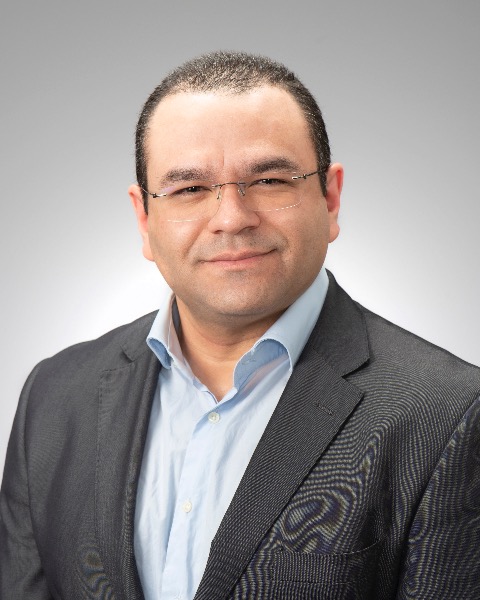Adult Cardiac
Category: Scientific Abstract: Oral/Poster
Long-Term Outcomes of Valve-Sparing Aortic Root Replacement with Reimplantation versus Remodeling: Meta-Analysis of Reconstructed Time-to-Event Data
M. Pompeu Sá1, X. Jacquemyn2, A. Awad3, J. A.. Brown4, D. Chu5, D. Serna-Gallegos6, F. A.. Kari7, I. Sultan6
1UPMC Heart and Vascular Institute, Pittsburgh, Pennsylvania 2KU Leuven, Leuven, Antwerpen 3Faculty of Medicine, Ain Shams University, Cairo, Aswan 4UPMC, Pittsburgh, Pennsylvania 5University of Pittsburgh School of Medicine, Pittsburgh, Pennsylvania 6University of Pittsburgh Medical Center, Pittsburgh, Pennsylvania 7LMU University Hospital and German Heart Center, Munich, Bayern
1UPMC Heart and Vascular Institute, Pittsburgh, Pennsylvania 2KU Leuven, Leuven, Antwerpen 3Faculty of Medicine, Ain Shams University, Cairo, Aswan 4UPMC, Pittsburgh, Pennsylvania 5University of Pittsburgh School of Medicine, Pittsburgh, Pennsylvania 6University of Pittsburgh Medical Center, Pittsburgh, Pennsylvania 7LMU University Hospital and German Heart Center, Munich, Bayern

Michel Pompeu Sá, MD, MSc, MHBA, PhD, FACC, FAHA
Aortic Surgery Fellow
UPMC Heart and Vascular Institute
Pittsburgh, Pennsylvania, United States
Presenting Author(s)
Disclosure(s):
Michel Pompeu Sá, MD, MSc, MHBA, PhD, FACC, FAHA: No financial relationships to disclose
Purpose: Valve-sparing aortic root replacement (VSARR) has emerged as the preferred procedure whenever feasible in patients undergoing aortic root surgery. The two main VSARR techniques are the Yacoub procedure (remodeling) and David procedure (reimplantation). Since these techniques differ considerably in their complexity, some questions remain in terms of their long-term outcomes.
Methods: We performed a pooled meta-analysis of Kaplan–Meier-derived time-to-event data. This study followed the Preferred Reporting Items for Systematic Reviews and Meta-analyses (PRISMA) reporting guideline. Using the PICOS strategy (Population, Interventions, Comparison, Outcome, and Study design), studies were included if the following criteria were fulfilled: 1) the population comprised patients who underwent VSARR; 2) there was an intervention group undergoing VSARR with reimplantation; 3) there was a second intervention group undergoing VSARR with remodeling; 4) outcomes studied included follow-up with survival/mortality rates and/or need for reintervention (with at least one of these outcomes accompanied by Kaplan-Meier curves); 5) any study design would be included. The following sources were searched for articles meeting our inclusion criteria and published by December 31, 2022: PubMed/MEDLINE, EMBASE, SciELO, LILACS, CENTRAL/CCTR (Cochrane Controlled Trials Register), Google Scholar, and the reference lists of relevant articles.
Results: Fifteen studies met our eligibility criteria, comprising 3,044 patients (1,991 in the reimplantation group and 2,018 in the remodeling group). Patients who underwent VSARR with remodeling had a higher risk of all-cause death (HR 1.54, 95%CI 1.16–2.03, P=0.002, log-rank test P< 0.001). Landmark analysis (with 4 years as landmark timepoint) demonstrated that survival was lower in patients who underwent VSARR with remodeling (HR 2.15, 95%CI 1.43–3.24, P< 0.001) in the first 4 years. Beyond the 4-year timepoint, no difference in survival was observed (HR 1.04, 95%CI 0.72-1.50, P=0.822). The risk for need of aortic valve and/or root reintervention was higher in patients undergoing VSARR with remodeling (HR: 1.49, 95%CI 1.07–2.07, P=0.019, log-rank test P < 0.001). We did not find statistically significant coefficients for covariates such as age, female sex, connective tissue disorders, bicuspid aortic valve, aortic dissection, coronary bypass surgery and total arch replacement, which means that these covariates did not modulate the effects observed in our pooled analyses.
Conclusion: VSARR with reimplantation is associated with better overall survival and lower risk of need for reintervention over time in comparison with VSARR with remodeling. Regarding overall survival, we observed a time-varying effect which favored the reimplantation technique up to 4 years of follow-up, but not beyond this timepoint.
Identify the source of the funding for this research project: No funding
